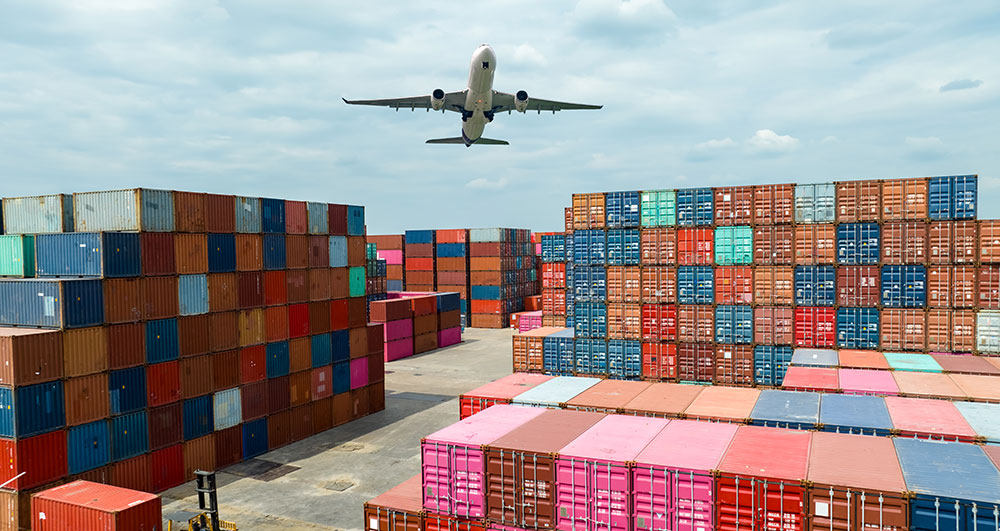
China and Thailand share a strong trade relationship within the ASEAN region. As Chinese exports continue to grow—ranging from electronics, machinery, textiles, to consumer goods—Thai importers and businesses are increasingly dependent on efficient shipping solutions. For companies sourcing from China, one of the most important decisions is choosing the right shipping method: Air, Sea, or Express courier.
Each option comes with its own advantages, limitations, costs, and delivery times. In this article, we’ll compare air, sea, and Expressversand from China to Thailand to help you select the best method for your business needs.
1. The Importance of Choosing the Right Shipping Method
Logistics is more than just moving goods—it directly impacts:
- Kostenwettbewerbsfähigkeit: A cheaper shipping method can reduce product prices and increase margins.
- Speed to market: Faster shipping helps businesses meet demand peaks or seasonal sales.
- Reliability: Smooth customs clearance and on-time delivery keep supply chains running.
- Flexibilität: The right method allows businesses to balance urgent vs. bulk shipments.
With China’s manufacturing hubs (Guangzhou, Shenzhen, Shanghai, Ningbo, Yiwu) closely connected to Thailand’s major gateways (Bangkok, Laem Chabang), shippers have a variety of transport choices.
2. Air Freight from China to Thailand
Transitzeit
- 2-5 Tage depending on the origin and destination airports.
- Common routes: Guangzhou, Shenzhen, Hong Kong → Bangkok (BKK), Don Mueang (DMK).
Kosten
- Typically $4–8 per kg (fluctuates with fuel prices and demand).
- Minimum chargeable weight: 45–100 kg depending on airline.
Am besten für
- High-value goods (electronics, luxury items).
- Urgent shipments.
- Perishable items (fresh food, pharmaceuticals).
Pros
- Fast and reliable delivery.
- Frequent flights ensure flexibility.
- Reduced risk of damage due to shorter handling time.
Cons
- High cost compared to Seefracht.
- Limited cargo space for oversized goods.
- Stricter restrictions on dangerous goods (batteries, chemicals).
3. Sea Freight from China to Thailand
Transitzeit
- 5-10 Tage port-to-port.
- Main ports: Shanghai, Ningbo, Shenzhen → Laem Chabang, Bangkok Port.
Kosten
- Much lower than Luftfracht.
- FCL (volle Containerladung): $600–$1,200 per container.
- LCL (Less than Container Load): $50–$120 per cubic meter.
Am besten für
- Bulk shipments (furniture, machinery, textiles).
- Heavy cargo.
- Businesses planning inventory in advance.
Pros
- Cheapest per-unit cost for large shipments.
- Suitable for any cargo type, including oversized.
- Multiple options: FCL or LCL consolidation.
Cons
- Slower than air and express.
- Requires customs clearance at both ends.
- Risk of port congestion during peak seasons.
4. Express Shipping from China to Thailand
Transitzeit
- 1-3 Tage von Tür zu Tür.
- Carriers: DHL, FedEx, UPS, TNT, SF Express.
Kosten
- Higher than air freight.
- Small parcels: $10–$15 per kg (depending on service).
- Discounts available for bulk accounts or through freight forwarders.
Am besten für
- Small parcels (samples, e-commerce orders).
- Urgent deliveries.
- Businesses needing fixed, predictable delivery times.
Pros
- Fastest delivery option.
- Door-to-door with customs clearance included.
- Full tracking available.
Cons
- Expensive for heavy or bulky shipments.
- Weight and size restrictions apply.
- Surcharges for remote delivery areas.
5. Comparison Table: Air vs. Sea vs. Express
| Faktor | Luftfracht | Seefracht | Express-Versand |
|---|---|---|---|
| Transitzeit | 2-5 Tage | 5-10 Tage | 1-3 Tage |
| Kosten | Medium ($4–8/kg) | Low ($50–120/CBM, $600+/FCL) | High ($10–15/kg) |
| Am besten für | Urgent, high-value cargo | Large volume, heavy cargo | Small parcels, e-commerce |
| Zollbehörden | Required | Required | Usually included |
| Flexibilität | Good | Excellent for volume | Best for small urgent shipments |
6. How to Decide the Best Option
The right choice depends on your cargo type, urgency, and budget.
- Choose Air Freight if: You need a balance between speed and cost for medium-sized shipments.
- Choose Sea Freight if: You ship bulk cargo regularly and can plan inventory in advance.
- Choose Express if: You ship small parcels, samples, or e-commerce orders needing guaranteed fast delivery.
7. Tips for Optimizing China–Thailand Shipping
- Use DDP (Delivered Duty Paid) shipping for hassle-free customs clearance, especially for e-commerce.
- Leverage Free Trade Agreements (ACFTA, RCEP) to reduce import tariffs.
- Consolidate cargo to save on LCL costs.
- Work with an experienced freight forwarder with offices in both China and Thailand for smooth handling.
- Book early during peak seasons (Chinese New Year, Thai Songkran, and Q4 holidays) to avoid delays.
Schlussfolgerung
For businesses trading between China and Thailand, shipping choices directly affect profitability and customer satisfaction.
- Luftfracht provides speed at a reasonable cost.
- Sea freight is the most economical for large shipments.
- Expressversand is unbeatable for small parcels and urgent needs.
By understanding the strengths and weaknesses of each method, and partnering with a reliable freight forwarder, companies can design a logistics strategy that reduces costs, avoids delays, and ensures goods arrive safely.
